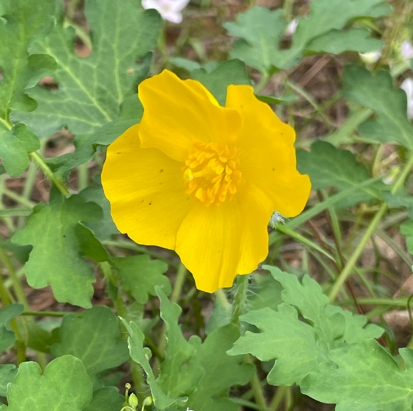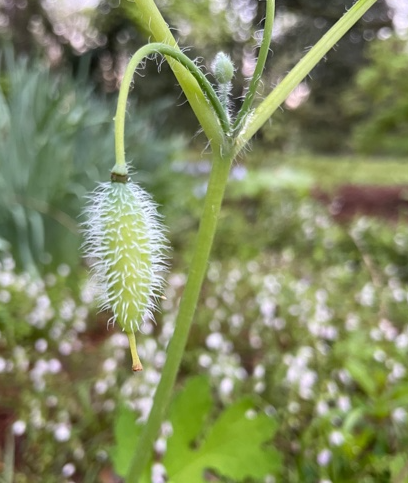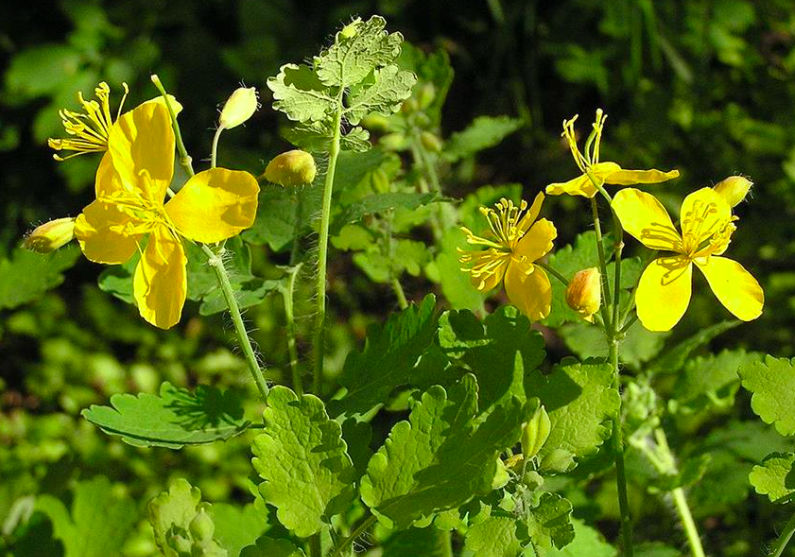This spring my garden has been enhanced with the bright yellow blooms of the Celandine poppy. This is one of only two members of the Poppy family native to eastern North America (Bloodroot being the other). Celandine (Stylophorum diphyllum), sometimes called wood poppy, is a beautiful, showy wildflower that grows well in the semi-shady conditions of my back yard.

It is uncommon to find this in the wild and in Ontario it is considered an endangered species. But fortunately, it is easily cultivated and so far, it is a very satisfactory addition to the garden. I started it from bare roots (purchased at Gardens of the Blueridge Nursery last fall) and was delighted to see the bright green, attractive leaves unfurl early this spring. It only blooms for 2 – 3 weeks but it self sows and I’m hopeful that it will create gentle swaths of color without becoming aggressive.

The seed pods are as interesting, though not as showy, as the blossom. They are fuzzy and hang from the petiole like a pendant. The sap is bright yellow orange and was used by Native American tribes as a dye. Take care, the sap will stain and possibly irritate your hands.

The common name, Celandine, comes from the plant’s similarity to the European plant Greater Celandine, Chelidonium majus. The two plants look very similar but the Greater Celandine is an aggressive grower and though not actually invasive, it should be maintained so that it does not push out other, more desirable natives.
Greater Celandine was used in medicinally for treating jaundice. This was based on the doctrine of signatures (or the Signature of All Things according to Elizabeth Gilbert) which was a European 17th century theory suggesting that whatever a plant physically resembled, it could be used to cure. For example the bright yellow sap of Greater Celandine was used to treat the yellow skin of jaundice.

Greater Celandine has a long history of use in folk medicine, with some pretty fantastic claims. For example, Albertus Magnus wrote in the thirteenth century, “if before named herb (Celandine) be put upon the head of a sick man, if he shall die, he shall sing anon with a loud voice, if not, he shall weep.”
Perhaps more useful for the lawyers in the family is the old superstition that says if you carry Celandine along with the heart of a mole, you will “vanquish your enemies and win your lawsuits!”
